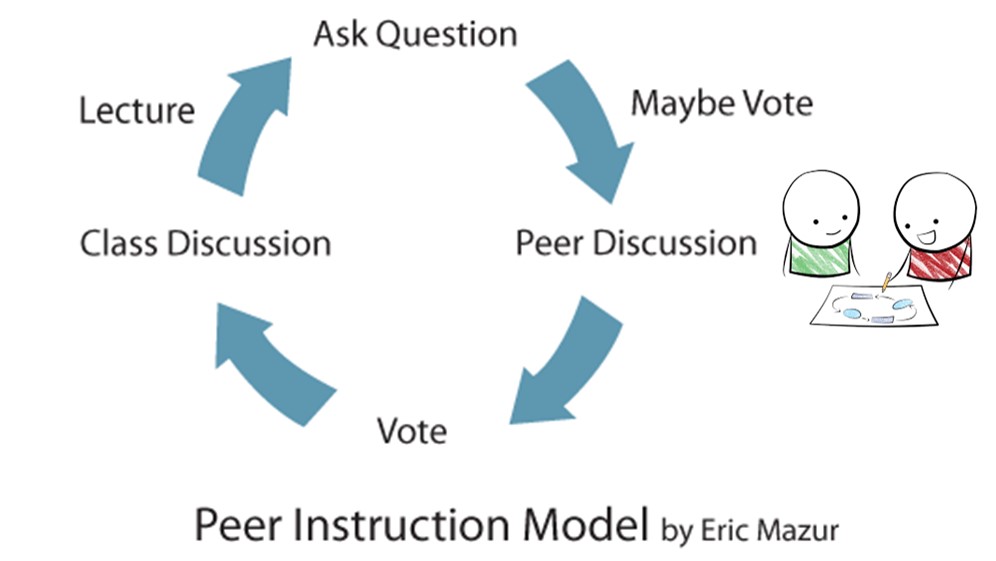For the things of this world cannot be made known without a knowledge of mathematics.
Peer Instruction
Peer instruction, introduced by Eric Mazur, is designed to engage students during class through activities that require each student to apply the core concepts being presented, and then to explain and discuss those concepts with their fellow students. After a particular topic is presented by a teacher, a concept question (a question probing understanding of a particular concept) is posed. Students are given one or two minutes to formulate individual answers and vote, using clicker devices or mobile phones, for an answer from a choice displayed on a screen. Students then discuss their answers with others sitting around them; the instructor urges students to try to convince each other of the correctness of their own answer by explaining the underlying reasoning. After a few minutes, the instructor calls an end to the discussion and polls students for their answers again which may have changed based on the discussion. The hope is that the correct answer spreads due to the reasoning employed by students who understand the concept.

Above anything else, peer instruction makes each student think and think twice: once individually and then again when trying to explain their point of view to the fellow students. Mazur’s and his followers’ results show a significant increase in the percentage of students answering the concept question correctly. Peer instruction has been shown to be effective across various disciplines, including mathematics, at second and third level. The logic underlying the success of peer discussion based on concept questions is that it continuously engages students’ minds and provides feedback to both students, and the teacher, about the level of understanding. It also allows students to construct their own knowledge of the topic. Other benefits include the (usually positively received) social aspect of the peer discussion and the students’ greater openness to accept information from their peers who know and are convincing in their explanations. There is also the use of a different, and perhaps simpler, language with explanations.
Importantly, as a basis for peer discussion, concept questions can be designed to uncover and highlight students’ misconceptions in the material thus bringing the students’ attention to the issues and allowing firstly the students themselves, and if necessary the teacher, to address those. Watch a video showing Mazur using peer instruction here. Poll Everywhere and Kahoot are examples of the online platforms available to implement voting in a peer instruction class.
References
1. Mazur, E., 1997. Peer instruction. A user's manual. Upper Saddle River: Prentice Hall.
2. www.polleverywhere.com
3. www.kahoot.com


